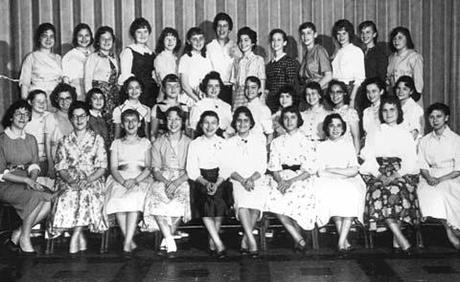 In the late nineteenth and early twentieth centuries in Russia, a large portion of young Jews would attend secular reading groups. This was often a step in the path to assimilation: the events were not separated by sex, in stark contrast to most religious gatherings, and the topics of discussion were either completely divorced from religion or categorically anti-religious in nature. Young women who went to these events had more at stake then their male counterparts. In an attitude that prevails to contemporary times, Russian Jewish parents were harsher on their daughters than their sons for socializing with peers, especially non-Jewish ones, of the opposite sex. This double standard was, most likely, applied because of the dominant gender roles and expectations of the era: that women belong in the home and should not be found in the streets too often. However, Jewish parents probably also wanted to keep their daughters close to home in order to ensure Jewish continuity and exert as much control as possible over their daughters’ religious lives and future husbands.
In the late nineteenth and early twentieth centuries in Russia, a large portion of young Jews would attend secular reading groups. This was often a step in the path to assimilation: the events were not separated by sex, in stark contrast to most religious gatherings, and the topics of discussion were either completely divorced from religion or categorically anti-religious in nature. Young women who went to these events had more at stake then their male counterparts. In an attitude that prevails to contemporary times, Russian Jewish parents were harsher on their daughters than their sons for socializing with peers, especially non-Jewish ones, of the opposite sex. This double standard was, most likely, applied because of the dominant gender roles and expectations of the era: that women belong in the home and should not be found in the streets too often. However, Jewish parents probably also wanted to keep their daughters close to home in order to ensure Jewish continuity and exert as much control as possible over their daughters’ religious lives and future husbands. Attending and performing in the theater were other activities that many Russian Jewish young men and women did in opposition to their parents’ wishes. As drama circles began to allow women to perform on stage in the early 1900s, an unheard of concept in previous generations, many women were attracted to the theater. It is possible that this was such a popular pursuit for young Jews because of plays’ depiction of the conflict that many felt between their religious upbringing and practice and secular aspirations and desires. These portrayals “were heavily gendered”; although both sexes’ conflicts revolved around the tension between religion and modernity and often ended in assimilation, women’s struggles had the added element of rebellion against gender roles and arranged marriages.
The public lending library also became a point of contention within the Jewish community. Although Russians began to advocate for libraries in the 1890s, it took over a decade for them to rise to popularity. This social phenomenon occurred to the dismay of Jewish religious leadership, who felt that the wide availability of secular books would lessen people’s desire to read religious texts and consequently threaten the security of the people’s religious observance. However, the availability of secular books turned out to be more dangerous for women’s religious observance, as more Jewish women than men in Russia used the public lending libraries. When the Yiddish word for to read was used about men, it was in reference to studying as for a religious purpose; however, the same word in reference to a woman referred to reading a storybook or book for pleasure. Women’s increased levels of reading was seen as problematic by the elders of the Jewish community, since it introduced Jewish women to a whole world that they had previously lacked knowledge of.
This introduction did lead Jewish women to leave religious practice. One Russian Jewish woman who lived at the beginning of the twentieth century, Sonia Ayerof, said, “After studying books on sociology, I came to the conclusion that God is a product of simple thinking and as people become more educated, they have less need for God. Soon I became a heretic and ceased living religiously. Our religious parents, understandably, were against our activity. What does a Jewish daughter need education for? Only to stray from the proper path.”
Ayerof was not alone in leaving observant Judaism as a result of her reading. Popular literature portrayed young Jewish women who left religious life as a consequence of reading secular fiction, like Tevye’s daughter Chava in Sholom Aleichem’s “Chava.”

